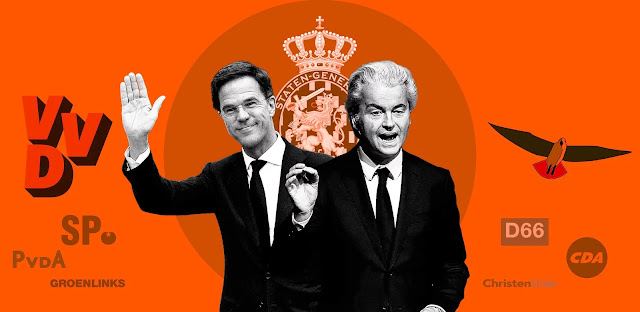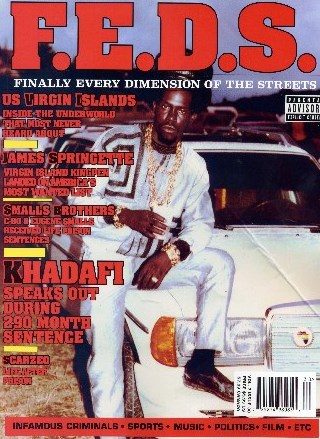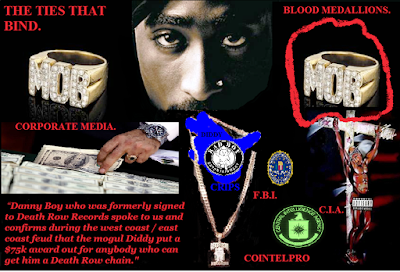Why Sint Maarten will be independent: A fact driven analytical report.
The following statistics are from 2004 when the so called Netherlands Antilles still existed. The facts shown are also used by “analysts”, like Stefan Molyneux and others to bolster populist politicians like Geert Wilders’ case that Holland should have fewer immigrants https://www.youtube.com/watch?v=ypnC5-M7PhQ
The drug trade is a prime driver of crime across the Caribbean. In the Netherlands Antilles, authorities estimate that 75 percent of crime is drug-related. Some 60 percent of all the cocaine seized in the Caribbean in 2004 was seized in the Netherlands Antilles, and cocaine seizures there increased dramatically between 2001 and 2004. Confronted with large numbers of people attempting to smuggle drugs by commercial flights, authorities implemented a “100% Control” policy of screening large numbers of passengers for drugs. Drugs were confiscated from the couriers, but in most cases the couriers themselves were not arrested. The program has been very successful in reducing cocaine smuggling via air courier, and could be tested in other contexts, including other Caribbean countries suffering from drug transshipment. The Antillean example also highlights the need for cooperation between Caribbean transshipment countries and destination countries in maritime interdiction.
7.1. Despite their diversity, the Caribbean countries share a common affliction: they are geographically positioned in the world’s largest drug transit zone. South America produces nearly all the world’s cocaine. The United States and Europe are responsible for 88 percent of global retail sales of cocaine, a market worth some US$70 billion in 2003(UNODC, 2005). The gross domestic product of the entire Caribbean was US$31.5 billion in 2004. (ECLAC, 2006). In other words, the value of the drug flows through the region may exceed the value of the entire licit economy.
7.2. Drug trafficking is associated with significant increases in crime, particularly violent crime and the use of firearms, as violence or the threat of violence regulates transactions in this market. In addition, drug trafficking is associated with money-laundering, trafficking of firearms, and corruption. Drug use is associated with increases in both violent crime and various types of property crime. For more on recent drug trafficking trends in the Caribbean, see Chapter 2; for regional policy responses to drug trafficking, see Chapter 10.
7.3. CARICOM’s Regional Task Force on Crime and Security, speaks of a three-pronged strategy to international drug control:
• Eradication or alternative development for producer countries (e.g. Colombia, Peru and Bolivia for cocaine)
• Supply restriction through interdiction operations for transit countries (e.g. Caribbean states); and
• Demand reduction for the main consumer countries (e.g. North America and Europe). (CARICOM, 2002)
7.4. This chapter examines interdiction efforts in the Netherlands Antilles. The Netherlands Antilles are an autonomous part of the Kingdom of the Netherlands. They are comprised of two groups of islands located about 900 km apart: • Curacao and Bonaire, located in the south of the Caribbean, near the coast of Venezuela;
• St. Eustatius, Saba, and St. Maarten, in the Eastern Caribbean.1
7.5. The Netherlands Antilles have a population of 183,000 people, (United Nations, 2004; United Nations, 2005)2 about 75 percent of whom live on the island of Curacao. The country is relatively well-developed, with a GDP per capita among the highest in the Caribbean, good infrastructure, and an economy based on tourism, financial services, and oil transshipment.
7.6. The Netherlands Antilles was chosen as a case study for two reasons. First, it is one of the Caribbean territories most afflicted by the drug trade and is among the world leaders in cocaine seizures per capita. Second, the government of the Netherlands Antilles, in collaboration with the Dutch government, has undertaken innovative and seemingly successful policies to interdict the supply of cocaine.
7.7. About 100 times more cocaine per capita was seized in the Netherlands Antilles than in the United States in 2004—over nine tons, or just under 50 grams of cocaine for every man, woman, and child on the islands.3 Some 60 percent of all the cocaine seized in the Caribbean in 2004 was seized in the Netherlands Antilles, and cocaine seizures increased dramatically between 2001 and 2004 (Figures 7.1 and 7.2).4
7.8. The increased flow of drugs though the region is believed to have a powerful impact on the local crime situation. The Netherlands Antilles authorities estimate that 75 percent of the crime on the islands is drug-related. On March 12, 2004, the Antillean government proposed a state of emergency due to the levels of crime afflicting the society, opening the door for both Dutch and Antillean military to participate in internal security operations. This was in response to a rapid increase in the number of crimes seen in Curacao. Drug-related murders increased from 12 in 2002 to 29 in 2003. Other islands experienced similar problems. The murder rate in St. Maarten went from 20 per 100,000 in 2001 to 47 per 100,000 in 2003.5
1 St. Maarten is half of an island, the other half being St. Martin, a French territory. Aruba was part of the Antilles until 1986, when it became a separate country within the Kingdom of the Netherlands. While drug trafficking through Aruba used to be a major issue, it is much less so today. Aruba was removed from the US State Department’s list of major drug producing and transit countries in 1999. The reason for this decline is unclear.
2 World Population Prospects: The 2004 Revision and World Urbanization Prospects: The 2003 Revision, http://esa.un.org/unpp, accessed 25 July 2006.
3 The Netherlands Antilles ranked eighth in the world in terms of gross cocaine seizures in 2004, just behind the Netherlands and just ahead of Bolivia and Brazil.
4 In addition to a possible increase in real volumes transiting the region, the dramatic rise in seizure figures is likely the result of a shift from an early focus largely on airport interdiction to intelligence-led operations against major traffickers, which only began to pick up around 2001. This was also the time that the Coast Guard of the Netherlands Antilles and Aruba (CGNAA) came on line, after being equipped with three cutters in 1999.
5 Information on population and number of murders from the Central Bureau of Statistics Netherlands Antilles Statistical Yearbook as quoted on their on-line database: http://www.cbs.an/stat.asp.
The Netherlands Antilles have not always been at the epicenter of the global cocaine trade.6 Recently, a number of things have changed. Law enforcement efforts have made it less likely that cocaine shipments depart directly from Colombia than in the past, and more likely that they come from a secondary country, particularly Venezuela. Between much of the Venezuelan coastline and the rest of the world lie the islands of Curacao, Bonaire, and Aruba, so maritime cocaine shipments are likely to pass through the territorial waters of these countries. In addition, there is much commercial sea traffic between Venezuela and the Netherlands Antilles, which are just a few kilometers offshore.
7 This traffic provides cover for drug shipments that can then be forwarded by sea or by air.
7.10. The islands’ continued membership in the Kingdom of the Netherlands has also been important. While cocaine use in the United States is down since the 1990s, it has been increasing in Europe. The European portion of the Kingdom of the Netherlands is one of the two main points of entry for cocaine to Europe.8 The Netherlands Antilles have suffered from high rates of unemployment since the closure of the Shell refinery in
6 In the early days of the Colombian cartels, large volumes of drugs were flown by private planes into the United States, their main destination. Improvements in radar response put an end to this, and shipments became increasingly maritime. Again, most sea routes from Colombia to the U.S. did not pass through the most populous areas of the Dutch Caribbean.
7 Curacao is less than 65 km off the coast of Venezuela. Venezuela is the source of 52 percent of imports to Antilles. See Economist Intelligence Unit, “Netherlands Antilles Country Report.” London: EIU, June 2006.
8 The other being Spain. About 65 percent of the cocaine seized in Europe in 2004 was seized in Spain and the Netherlands. According to Europol, “Cocaine is also shipped from South America to Europe via the Caribbean Islands. This in part can be explained due to the historical links that exist between the Caribbean and some European countries, for example Curacao and the Netherlands …” See Europol, “Drugs 2006.” The Hague: Europol, 2006, p. 3.
7.11. A final factor in the remarkable seizure totals relates not to the existence of the flow of drugs but rather to their detection. Assisted by the Dutch Royal Navy and the Coast Guard for the Netherlands Antilles and Aruba (a common agency of the three countries in the Kingdom), Antillean law enforcement has intercepted some massive shipments in recent years, shipments that might have been missed by less well-resourced agencies, or only apprehended on arrival in Europe. Further, both the Antilleans and the mainland Dutch have also taken an innovative approach to stopping what had been a virtual stampede of couriers on commercial air flights. At least until recently, they have had a “drug focused” (as opposed to courier-focused) interdiction policy at the airports, a policy that is discussed further below.
DRUG TRAFFICKING ON COMMERCIAL AIR FLIGHTS: AN INNOVATIVE POLICY RESPONSE
7.12. It is estimated that 30 tons of cocaine enter Europe on commercial air flights every year, and that Schiphol International Airport in Amsterdam has been one of the primary points of entry (Europol, 2006). In 2000, 4.3 tons of cocaine were seized at Schiphol (INCB, 2001), and by August 2001, the flow of cocaine from the Netherlands Antilles had reached crisis proportions. An innovative approach became necessary. The first priority became stopping the ingress of drugs, even if that meant identifying more couriers than could possibly be prosecuted.
Given the facts shown above Wilders and others like him will continue to press for the case that, so called Dutch Caribbean people are an existential threat to Dutch culture and society. Presently Wilders is again enjoying a high in the polls, showing that he is the leading Dutch politician which has been the case for years. The majority of the Dutch voting populace are for Wilders, it is only a matter of time before he gains a majority in the Dutch parliament. Given the nationalist sentiments dominating Dutch society and Europe as a whole I can only envision a hardening of the anti-foreigner (i.e. non Dutch European) stance of the Dutch population which will eventually translate into policy in the first and second chambers in the Hague. Forcing the islands of Sint Maarten and Curacao to secure their populaces’ future in an independent democratic model.





.jpg)
Comments
Post a Comment